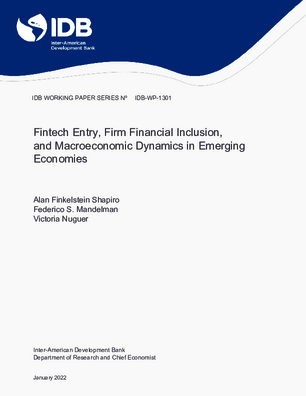Fintech Entry, Firm Financial Inclusion, and Macroeconomic Dynamics in Emerging Economies
Date
Jan 2022
Financial inclusion is strikingly low in emerging economies. In only a few years, financial technologies (fintech) have led to a dramatic expansion in the number of non-traditional credit intermediaries, but the macroeconomic and credit-market implications of this rapid growth of fintech are not known. We build a model with a traditional banking system and endogenous fintech intermediary creation and find that greater fintech entry delivers positive long-term effects on aggregate output and consumption. However, greater entry bolsters aggregate firm financial inclusion only if it stems from lower barriers to accessing fintech credit by smaller, unbanked firms. Decreasing entry costs for fintech intermediaries alone has only marginal effects in the aggregate. While firms that adopt fintech credit are less sensitive to domestic financial shocks and contribute to a reduction in output volatility, greater fintech entry also leads to greater volatility in bank credit, thereby introducing a tradeoff between output volatility and credit-market volatility.




